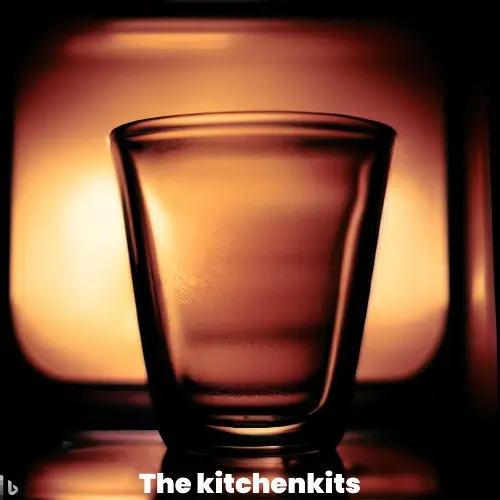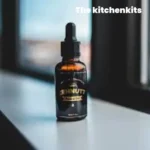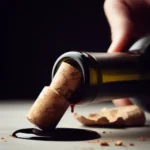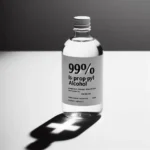Table of Contents
How Long Can You Microwave Glass
When it comes to microwaving glass containers, one of the most common questions is “How long can you microwave glass safely?”
The answer depends on a few factors, including the thickness and composition of the glass, the contents being microwaved, and the wattage of your microwave oven. As a general rule, microwave-safe glassware like Pyrex can be microwaved indefinitely as long as you heat food or liquid inside and handle it carefully. However, thin glassware should only be used for short-term reheating for 1-2 minutes at a time.
Always inspect glassware before microwaving and stop immediately if you see any issues like cracks forming. With proper microwave-safe dishes, glass can typically be microwaved as long as needed to heat the contents without risking the glass itself.
This article will provide a comprehensive guide on microwave-safe glass, the risks of putting certain glassware in the microwave, and tips for safely using glass in your microwave oven.
What Makes Glass Microwave-Safe?
The key factor that determines if glassware can be used in the microwave is its composition. Glass which is considered microwave-safe is designed to withstand sudden temperature changes and the intense heat generated inside a microwave oven.
Here are some characteristics of glass that make it appropriate for microwave use:
- Borosilicate glass – Glass made with boron trioxide, which has very low thermal expansion. It can withstand extremely high temperatures. PYREX and other heat-resistant bakeware are made of borosilicate glass.
- Soda-lime glass – The most common type of glass used to produce kitchenware and dishes. It contains soda ash and limestone and is designed to be thermal shock resistant.
- Aluminosilicate glass – Contains alumina and silica, making it very resistant to high temperatures. Corelle dishes are made of aluminosilicate glass.
- Tempered glass – Glass that has been thermally or chemically treated to increase its strength. Tempered glassware bounces when dropped rather than shattering.
The key is that the glass must have properties to prevent cracking or shattering when rapidly heated in the microwave. Untreated soda-lime glass is generally too unstable to be considered microwave-safe on its own.
Are Older Glass Containers Safe for the Microwave?
If you have older glassware passed down through the family or picked up from a thrift store, take caution before putting it in the microwave. Glass produced more than 20 or 30 years ago may not have the same thermal resistance as modern microwave-safe glassware.
There are a few ways to help identify if older glass is potentially risky to microwave:
- Check material markings – Look for labels like “Pyrex” or “borosilicate glass” which indicate higher heat thresholds.
- Look for tempering marks – Small spots or lines on the glass can signify it was tempered for added strength.
- Perform the microwave test – Try microwaving a glass container with water for 30 seconds to 1 minute. If it gets very hot without cracking, it may be microwave-safe.
- Feel the weight – Heavy, thick glass is more resistant to breakage than thin, lightweight glass.
- Avoid chipping or scratching – Any defects or cracks make the glass more prone to shattering in the microwave.
When in doubt, it’s best not to microwave antique, vintage, or handmade glassware. The composition is too uncertain unless specifically labeled as microwave-safe.
Is It Safe to Microwave a Glass Coffee Cup or Glass Bowl?
Two items people commonly wonder about microwaving are glass coffee cups and glass mixing bowls. The risks depend greatly on the type of glass used to make the cup or bowl.
For glass coffee cups, those made of borosilicate glass or thick tempered glass are generally microwave-safe. However, thin coffee cups may easily fracture or get dangerously hot. Microwaving disposable paper cups is very risky as well.
For glass mixing bowls, commercial bowls designed for baking are usually fine in the microwave as they withstand oven temperatures. But homemade or decorative glass bowls are unlikely to be durable enough unless labeled microwave-safe.
To test glass containers like coffee cups and bowls, try microwaving them while empty for 30-60 seconds. Feel if the empty glass gets dangerously hot. Any cracking or instability means it should not be microwaved further.
Key Risks of Putting Glass in the Microwave
Now that we’ve covered what makes glass microwave safe, what are the actual risks if you put the wrong glassware in the microwave? Here are 5 main dangers to be aware of:
1. Shattering Glass
- Glass that cannot withstand rapid heating may crack, break apart, or shatter into shards. This causes a huge safety issue.
2. Super-Heated Glass
- Even if the glass holds its form, improper glassware can get extremely hot. Touching or handling it after microwaving poses a major burn hazard.
3. Melting Glass
- Some glass contains ingredients or impurities that cause it to melt at high temperatures. Melted glass can fuse to the microwave interior or your food.
4. Leaching Chemicals
- Inferior glass may allow chemicals like lead, cadmium or antimony to leach from the glass into your food when heated.
5. Food Contamination
- Shards of cracked glass can mix into your food making it unsafe to eat. Glass dust is also created as fractures spread.
Any of these situations caused by putting the wrong glass in the microwave makes your food unsafe and risks damaging the interior. Only microwave glass is designed to handle rapid temperature changes without fracturing or deteriorating.
Tips for Safely Microwaving Glass
Now that you know about microwave-safe glass and the potential risks, here are some tips to keep in mind:
Inspect for defects – Avoid microwaving glass with any chips, cracks, or scratches as these weak spots encourage breaking.
Use heat-resistant glassware – Look for oven-safe glass containers labeled as tempered, borosilicate, or otherwise thermal shock resistant.
No empty glass – Only microwave glass with food or liquid inside, not empty. Food absorbs some thermal energy.
Handle with care – Use potholders when removing hot glassware. Sudden temperature changes increase the risk of cracking
Watch closely – Stay near your microwave in case of accidents. Stop immediately if you see arcing or sparks inside.
Test new glassware – Try microwaving unfamiliar glass containers for short 10-15 second intervals at first to check for issues.
Taking these precautions will allow you to safely reheat foods in microwave-safe glass cookware and serveware. Having the proper glassware prevents accidents and contains the heat inside the glass itself rather than risking it shattering.
FAQs
How long can you microwave glass?
The length of time you can microwave glass depends on various factors such as the type of glassware, the thickness of the glass, and the temperature you are subjecting it to. It’s generally safe to microwave glass for short periods of time, but you should always exercise caution and follow the manufacturer’s guidelines.
Is glass microwave safe?
Not all glass is microwave-safe. Some glassware may contain metallic elements or have air pockets, which can cause the glass to shatter or break when exposed to high temperatures. Always check for the “microwave safe” label on your glassware or refer to the manufacturer’s instructions to ensure it is safe to use in the microwave.
Can I microwave cold glass?
It is generally safe to microwave cold glass. However, rapid changes in temperature can cause glass to break, so it’s best to place cold glassware in the microwave gradually and avoid subjecting it to extreme temperature variations.
What type of glass can I put in the microwave?
Microwave-safe glassware is typically made from tempered glass, which is specially treated to withstand higher temperatures. Look for glassware that is labeled as “microwave safe” or check with the manufacturer to ensure it is suitable for use in the microwave.
Can I put a glass cup in the microwave?
Whether or not you can put a glass cup in the microwave depends on the specific glassware. As long as the glass cup is labeled as microwave safe or made from tempered glass, it should be safe to use in the microwave. However, always take caution and avoid subjecting glassware to extreme temperature changes.
Can I put a glass cup with cold liquid in the microwave?
It is generally safe to microwave a glass cup with cold liquid. However, it’s best to avoid rapidly heating the glass by introducing it to extreme temperature changes. Gradually warm the glass cup in the microwave to reduce the risk of breakage.
How can I test if a glass is safe to microwave?
To test if a glass is safe to microwave, place it in the microwave with a small amount of water for a short period of time (10-15 seconds). If the glass remains cool and the water heats up, it is likely microwave-safe. Always exercise caution when handling hot glass and avoid subjecting it to rapid temperature changes.
Is it safe to microwave glass dishes?
The safety of microwaving glass dishes depends on their design and labeling. Look for glass dishes that are specifically labeled as “microwave safe” or check with the manufacturer’s instructions. Avoid microwaving glass dishes that have metallic decorations or have any visible chips or cracks.
What should I do if a glass breaks in the microwave?
If a glass breaks in the microwave, it is important to take caution and ensure your safety. Turn off the microwave immediately and avoid touching any shattered glass pieces. Allow the microwave to cool down before carefully removing the broken glass. Clean the microwave thoroughly to remove any glass fragments and dispose of the broken glass safely.
How can I prevent glass from breaking in the microwave?
To prevent glass from breaking in the microwave, follow these tips: use microwave-safe glassware, avoid subjecting glass to extreme temperature changes, gradually warm or cool glassware in the microwave, avoid using glassware with metallic elements, and check for any chips or cracks in the glass before microwaving.
Key Takeaways on Microwaving Glass
To summarize, here are some important points on whether particular glass items belong in your microwave:
- Modern glassware labeled “microwave-safe” is designed for microwave use, while vintage or antique glass may be unstable.
- Thick, treated glass like Pyrex and Corelle can withstand microwave heat. Thin disposable cups or bowls likely cannot.
- Plain soda-lime glass risks shattering unless designed and tested for microwaves.
- Empty glass should never be microwaved. Always keep food or water inside.
- Inspect carefully for chips, cracks, or scratches before microwaving any glassware.
Understanding these microwave safety tips for glass allows you to feel confident about what glassware you use. With proper microwave-safe containers, glass remains an incredibly useful material that can be easily paired with your favorite microwaveable meals and snacks.

I’m Ian Welkins, a seasoned professional in the kitchen industry. My passion now drives me to provide invaluable insights into the world of top-notch kitchen products. With years of hands-on experience, I’m your go-to source for culinary excellence.











